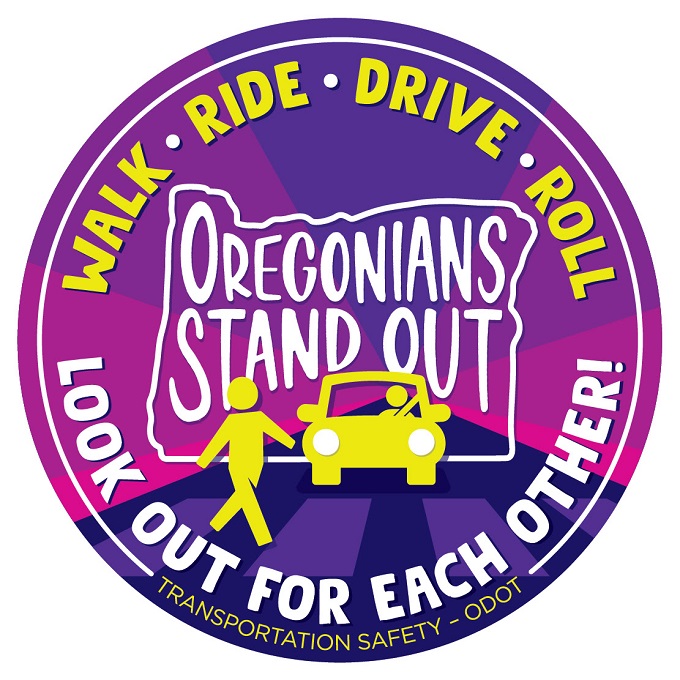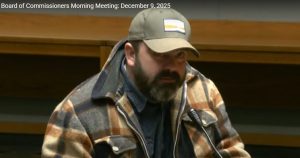Look out for pedestrians as days grow shorter, foggier
3 min read
October is Pedestrian Safety Month.
SALEM – October is Pedestrian Safety Month — a great time to brush up on the basics of keeping everyone safer on our roads, whether you’re commuting to work or just getting exercise.
Pedestrian safety is especially important as the days get shorter and foggier. Fatal crashes involving pedestrians are far more likely to take place at night when it’s harder to see people walking. In 2019, 76% of pedestrian fatalities in the U.S. occurred when it was dark out, according to the latest data from the National Highway Traffic Safety Administration.
Fatal crashes involving pedestrians are also more likely to occur away from an intersection. In 2019 in the U.S., according to NHTSA, 73% of pedestrian fatalities occurred at locations that were not intersections such as crossing in between intersections.
In the U.S., 6,205 pedestrians were killed in traffic crashes in 2019. An estimated 76,000 pedestrians were injured in traffic crashes, the NHTSA data shows.
In Oregon, the number of pedestrians killed in a motor vehicle crash increased from 79 in 2018 to 85 in 2019. Between 2015-2019, 16% of all those who died in crashes were pedestrians.
The top driver error involved in these crashes: failing to yield right-of-way to a pedestrian.
Everyone should:
- Plan ahead to avoid unplanned delays.
- Know and follow traffic laws.
- Be aware of their surroundings.
- Pay attention to weather and road conditions and drive accordingly.
- Focus on the task at hand: walking, rolling, biking or driving.
- Drive, walk, bike or roll sober. Alcohol and drugs impair your abilities and judgment.
Drivers should:
- Look for pedestrians, cyclists and motorcyclists when you look for oncoming vehicles and other traffic. Be especially mindful in parking lots, at stop signs, when backing up, or parking.
- Be extra cautious when driving in hard-to-see conditions or in places where you normally see people crossing such as parks, schools, shopping areas and busy intersections.
- Slow down and be prepared to stop when entering a crosswalk.
- Yield to pedestrians in crosswalks and stop well back from the crosswalk to give other vehicles an opportunity to see crossing pedestrians.
- Follow the speed limit, especially around people walking and in school zones and in neighborhoods where children are present.
- Check all crosswalks before turning to see if people are trying to cross the road and to look for oncoming cars.
Tips for Pedestrians
- Stay alert and ditch the distractions: Keep your eyes and ears open and ditch the distractions like texting, talking on the cell phone, or listening to headphones.
- Cross with caution and cross at corners: Don’t assume the coast is clear just because you’re using the crosswalk and the WALK sign is on. Continue to watch for traffic as you cross — especially for turning vehicles.
- Be clear to drivers: If you wish to cross, be sure to make eye contact with drivers. If you’re not sure the driver sees you, let the vehicle go first.
- Be visible: Wear bright clothing (even white clothing may not be visible at night). Add reflective material or a blinking light to your jacket or backpack or carry a flashlight at night. Be extra careful when walking at dawn or dusk.
- Watch for cars entering or exiting driveways or backing up in parking lots.
- Face oncoming traffic and use sidewalks when they are available. If there is no sidewalk, walk facing traffic and as far from traffic as possible.
- Cross streets at crosswalks or intersections, where people driving expect pedestrians. Look for cars in all directions, including those turning. If a crosswalk or intersection is not available, find a well-lit area where you have the best view of traffic. Wait for a gap in traffic that allows enough time to safely cross and continue watching for traffic as you cross.
Clink on the links to download some tips and a guidebook. For more information on ODOT’s Pedestrian and Bicycle program visit www.Oregonwalkbike.org. You can also download digital toolkits to help get the word out on pedestrian safety.
And remember we’re all pedestrians!



